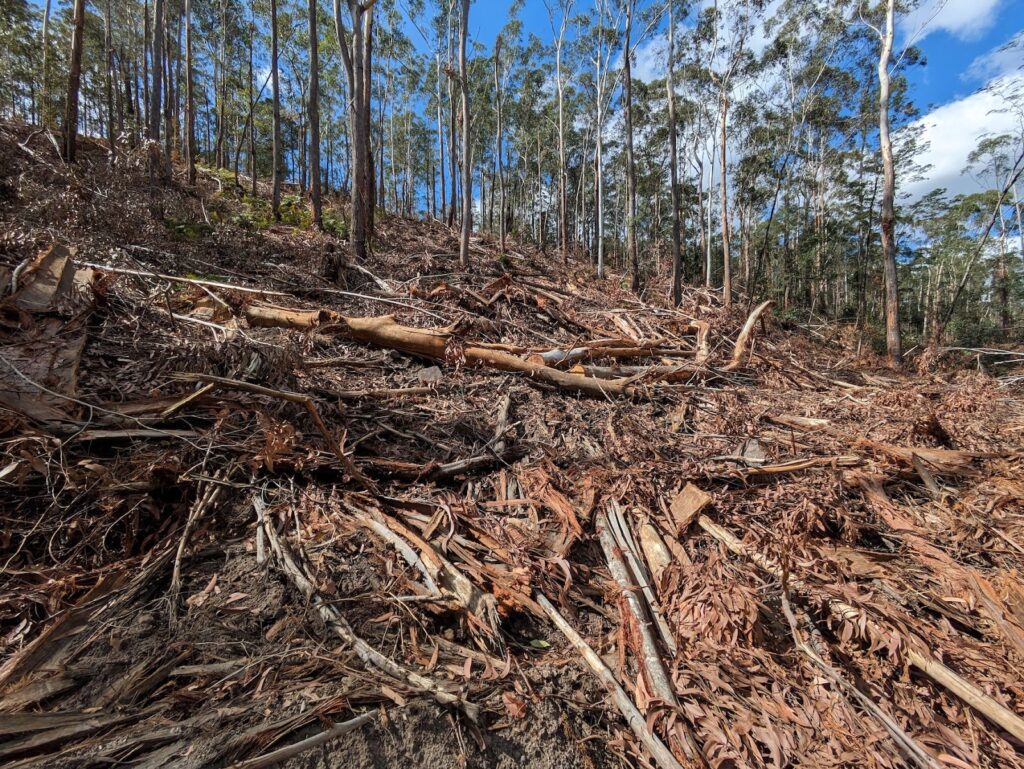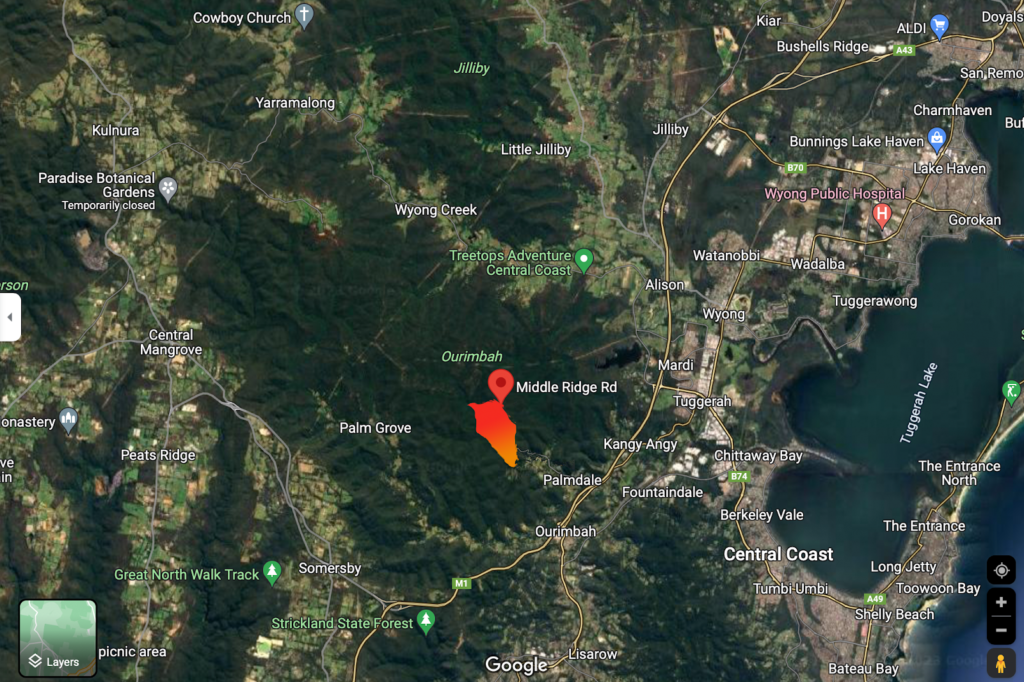Residents located around Ourimbah State Forest on the NSW Central Coast are being alerted to a “giant fire hazard, 300 acres in size in the immediate vicinity of their properties.

Three hundred acres of drying logging debris, gumleaves, logs, bark piles have been left in Ourimbah State Forest after Forestry Corporation’s recent logging activities.
The debris needs to be moved immediately otherwise there is a 300 acre tinderbox on the doorstep of many residences right before an El Nino hot and dry fire season.
The link below takes concerned residents to a form to fill out to deliver to the Rural Fire Brigade.
If you think this is a hazard that the Fire Department should be aware of, please fill in the form listing Ourimbah State Forest as the address of the hazard.
300 acres of flammable debris in the middle of the Central Coast
Ourimbah State Forest is a popular car dumping/burning site; this adds to the high risk of fires we are already facing.
Two cars have already been burnt on Redhill Rd in recent months.
Regardless of locked gates it could only take one torching of a car nearby to trigger a catastrophic fire in the forest.

Local residents have attempted to contact Forestry Corporation regarding these issues to no avail.
UQ Professor and Wildlife Conservation Society Director James Watson said logging regimes have made many forests more fire prone for a host of reasons.
“Logging causes a rise in fuel loads, increases potential drying of wet forests and causes a decrease in forest height,” Professor Watson said.
We must act before it is too late.


